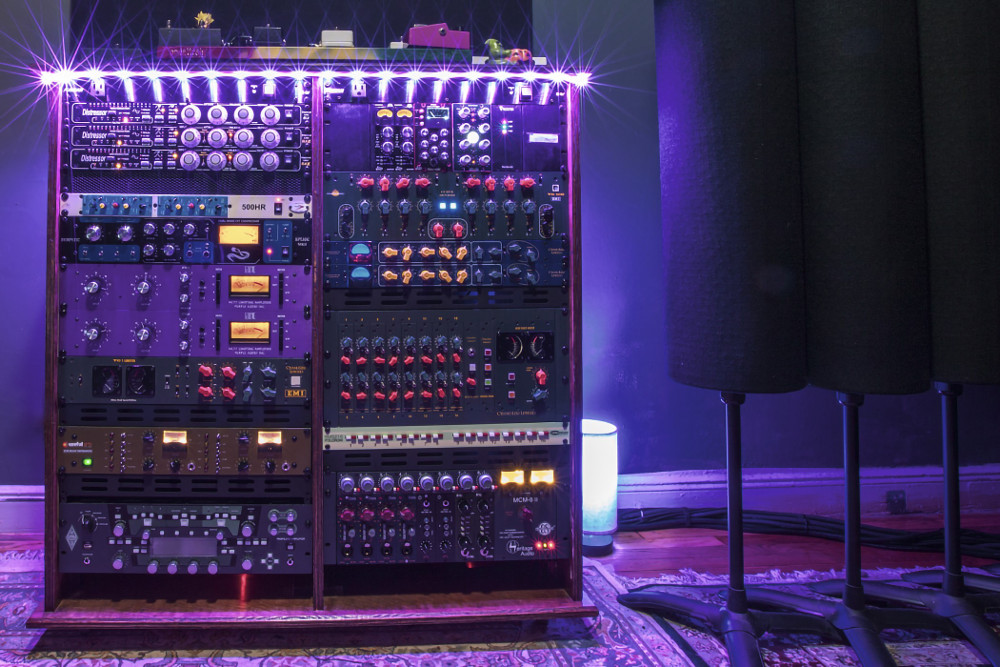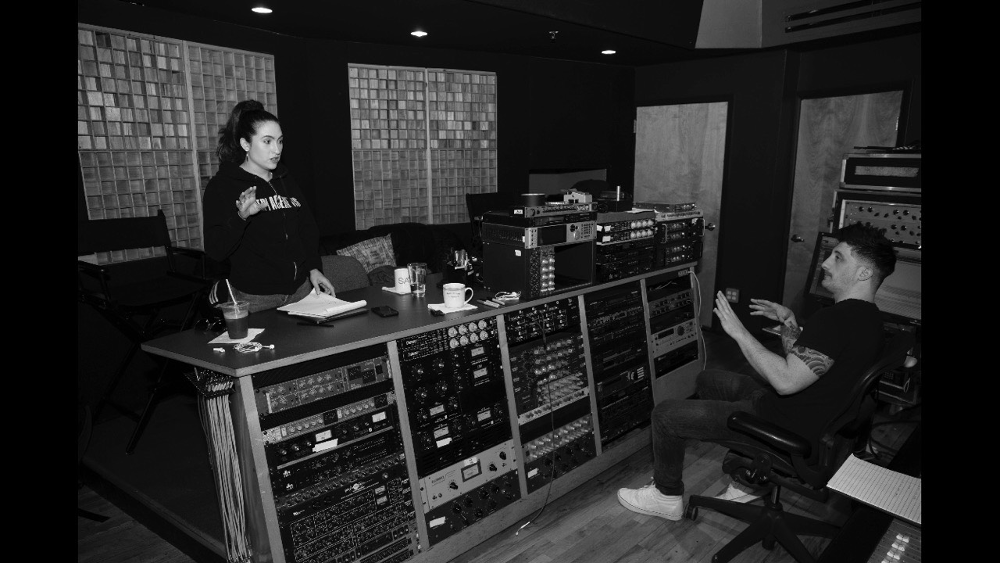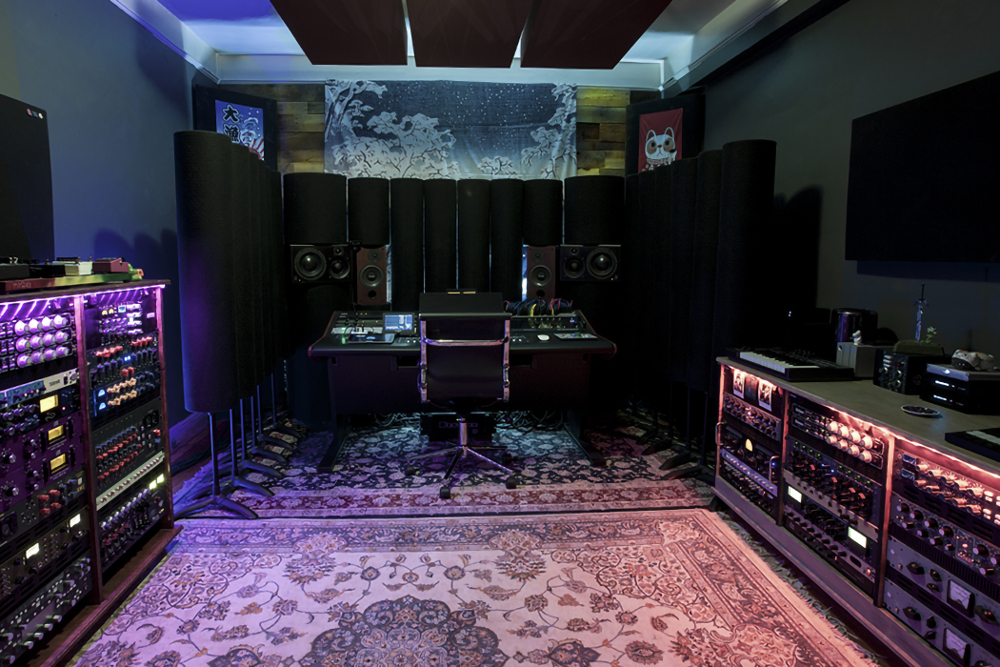Making the Mix Room: Richie Beretta — Queens, NYC
“Innovate, please. “
Mixer Richie Beretta has his sights squarely set on the future of mixing. That may seem like a bit of a contradiction from someone who’s new mix suite is spec’ed out like an analog gear showroom, but don’t let your eyes fool you.
This hardcore engineer was brought up ITB and knows his digital tools cold. His highly enquiring mind however, has led him to set up a mix suite in Queens, NYC with a decidedly distinctive signal path that emphasizes special circuitry. He loves his outboard — but only a certain kind.
As you’ll see in this “Making the Mix Room,” attitude is everything for this emerging mixer who counts Beyoncé, Major Lazer, and Diplo among his clientele. He’s got strong opinions about studio tools, but also about the brains behind them: Beretta counts multiplatinum mixer Tony Maserati as one of his mentors, and he shares his wisdom in this interview.
Drilling down, you’ll receive a priceless tip for mixing 808’s, why doing your job can also mean stepping up, plus plenty more food for thought. If the cross-section of next-gen and old-skool is compelling to you, Richie Beretta’s outlook is indispensable.
Mixer Name: Richie Beretta
Location: Forest Hills, Queens
Clients/Credits: Beyoncé, Major Lazer, Dillon Francis. Currently working on an EP for Ruby Stinson (daughter of Tommy Stinson of The Replacements/Guns and Roses) — she’s amazing.
Key Personnel: Adam Maginley – my trusted assistant
Mix Philosophy: I’d like to think what sets me apart as a mixer is my attention to details outside of the mixing world.
It’s not 1971 anymore. The romanticism around making a record unfortunately is only shared by the engineers – everyone else doesn’t care. If this stuff is important, then we should find a way to share what we believe is valuable to the artist and make it speak in our work – we can’t keep it to ourselves.
Moreover, these days mixers need to be strategic. It’s not just about balancing a record. Back when music was the commodity there were other people in charge of making sure the record was sonically on brand and competitive in whatever genre the song is intended to belong in.
These days that’s simply not the case, so it’s important as mixers that we ensure our work survives by not only being innovative with our sounds but also thinking like A&Rs: This awareness about the state of mixing in a modern age affects how I work on a record and ultimately is a constant reminder of how important it is for me to communicate the passion for the record-making process to the artist through dialogue, but ultimately through my work.
Mr. Maserati: When I met Tony Maserati (at a Mix with the Masters seminar) I definitely realized how valuable it is having someone you look up to remark on how you work.
Though part of me doesn’t regret the countless hours spent on trial and error that comes with teaching yourself something – having a mentor is important. I didn’t formally learn how to mix, I couldn’t afford the schools. Luckily for me, I grew up being formally trained in music and my father is a great recordist and musician who shared all he knew with me – with that I think I built a solid foundation to teach myself.
But a lot changed when I met Tony. Tony is my Bob Clearmountain, he’s the guy – simple as that. Many of the records he’s done, and I’m talking about even ones I listened to when I was, like, a single-digit kid have resonated with me way before I even knew what mixing was. It wasn’t until I started really digging to see who did all the records that I thought sounded the best that I found they were all from the same person – I mean I’m not surprised, that’s how the ear works.
Once I got to see him work I realized, “I’ve been going about everything wrong. This guy is the definition of song mixer – he gets into it man, it’s really something else. He’s grooving and everything he does is automatic – I’ve never seen someone behave like such an antenna for music.” That’s what makes him so good.
The trick I learned from watching him is to behave like a mixer but listen like the audience. Sounds simple, but connecting those two brains especially after years of concentrating on just technique was quite difficult. I’d be blessed to be half as good as him. The MWTM thing was kind of a fluke, but that summer, I just so happened to be producing and mixing a punk band from Paris who flew me out that week, so I used the bread I made from that gig to pay for the seminar.
As it turned out that the band I was working with also worked with Tony the previous year so that was a cool commonality that we got to connect on. After the seminar, we stayed in touch and he’d hit me up sometimes checking in and I’d hit him up with questions or just to say “Hey.” I wasn’t expecting it but I’m really grateful I can call him a buddy. My mom thinks it’s ‘cuz we’re both Italian – haha!
Sound/Design – How He Made His Mix Room: I fought the shit out of my room. Oh boy – when I moved here it was horrendous.
I was supposed to rent a great and affordable room at this really cool studio in Queens called Spin. But all the rooms were occupied. There was no way I was moving into a room in Brooklyn or Manhattan because rent is too high. No disrespect to those boroughs or the engineers who work out there but your boy needs to make a living – and my overhead needs to be gear not overpriced rent.
Dave Kutch had recommended to me the Attack Wall by a company called Acoustic Sciences and man what a difference – it took a little while to get used to it but it’s really great. I gotta say they’re a great company to work with they take out a lot of guess work. My monitors are ATC. I used the SCM25’s and 12’s both recommended to me by my gear guru, Dan Physics of Alto Music Brooklyn. I don’t think I’ve heard a more accurate speaker.
Though I recognize the efficiency of digital these days and most definitely do take advantage of it, I consider myself an analog guy. That stuff is still important because the emulations simply don’t sound as good, neither do they react to music in a way that’s unique to whatever program that is supposed to be driving it.
As a mixer, we’re supposed to make decisions on how everything in our arsenal reacts to the music. Most of us claim to be OCD about that.

Units from Useful Arts, Heritage Audio, Chandler Limited, Empirical Labs and more populate one rack.
That’s why I don’t get how some of us are cool with being 100% ITB: Plugins are not actually giving the exact unique response a piece of gear would, the response is a recall of a nearest possible behavior that signal would cause if it was an analog box and all of that is decided by an algorithm.
I want the real thing – I want the real response – it’s important.
That being said, I do think the whole analog vs. digital argument is stupid. There are engineers out there that are creating really terrible stigmas on both sides of the aisle and the argument is hardly about the music. I like to use them together – I believe to survive in the studio arts these days you need to be innovative. The last thing I want to sound like is someone who made a record in 1987. Though I appreciate and definitely am inspired by the golden age of recording – we simply don’t live in that time. And given the technological advancements on both analog and digital platforms you’d be shooting yourself in the foot if you didn’t go after it all.
I think it’s ironic, though, that it’s the engineer community’s penchant for all this old vintage analog stuff that’s killing analog and not the plugins. Everyone is hung up on vintage something or other or who makes an exact replica of a Fairchild. Who cares? If we demanded more innovation and better-sounding gear then we’d have more stuff like the Distressor and not one million versions of the same old 1073 clone. Look at it from the young consumer’s perspective: What’s more interesting, a remake of something a bunch of old people rant and rave about or some cool plugin that gets a good sound real fast that’s less than a tenth of the cost?
I rely heavily on calibration so that I can fly in and out of both worlds. The one thing I will say about digital is that there is speed in the workflow – but I’ve developed a way to calibrate not just my mix busses but all my parallel stuff and inserts so that I am working really fast. I started in the box and it was important to me when I did this big build out that I figured out a way to remain as fast — or at least close to the speed of mixing — entirely in the box. And I think I come pretty close – and it’s just simple calibration with a test tone that takes about 15 minuntes before every session and before I print.
Outboard Onslaught: I love gear, but I can’t get behind these vintage remakes let alone the actual vintage pieces.
Firstly, with the vintage stuff – good luck finding something in good enough shape where it doesn’t break regularly. And I’m working so I can pay bills and live, not so I can repair some ‘60’s compressor for the sake of having something vintage. That’s crazy. Plus people already made it with that sound. Why do you wanna sound like someone else? Innovate, please. It’s 2019, we have the capability — innovate. Let’s make some better gear.
There are companies like Serpent Audio or Useful Arts that are doing just that. I own everything Serpent makes, Burl converters, a bunch of Chandler stuff, and a million Distressors. And I buy multiples of the same unit because all of these things are capable of so many different types of sounds.
That’s what makes a great gear company: They understand the lore and great stuff that laid the foundation for pro audio, but they’re building forward off of those things. It’s real crazy out there — I’ve had manufacturers tell me that they can’t sell their 500 series because people have this hang up with 19” rack mounted stuff. So they’ll stop making their cheaper 500 series for more expensive rack units that sound exactly the same. It’s wild.
My Monitors: I went through a lot of monitors but when I heard the ATC’s (SCM12) they seemed the easiest to listen to.
Monitors are the most important thing you can own. I do believe you get what you pay for – but after a certain price I think you may experience diminishing returns. I chose the ATC’s because they were the first monitor I heard that, when you listen at both loud and quiet, they maintain the same amount of separation between parts of the arrangement.
And they’re not hyped. My ears are sensitive — and by that I don’t mean I have super hearing, I mean they get tired super-fast because of years of playing in loud bands. So the speakers I got are really easy to listen to, and the great resolution at a lower volume means I don’t have to kill my ears. Also, listening low takes reflections out of the equation.
For Example: The new room is just that — very, very new — so all the mixes I’ve done thus far are still unreleased, but this summer I’ll have some really cool stuff out. I’m actually very pumped about the Ruby Stinson records I’ve been working on these days – she’s so talented she’s gonna have a really bright future ahead of her.
Here’s the Dillon Francis album where I mixed the songs “Ven” and “No Pare” —this was a really great album Dill made:
For the Dillon stuff – he wanted his stuff LOUD. I mean my references were so bricked out, so him being an EDM guy his low end was very important. I did a lot of separating on his 808’s. Instead of distorting the whole signal I’d separate it with a filter and only distort the harmonic of the 808 and blend it so that it would translate both on a big speaker and a laptop.
It took a little referencing but once I got it, I just saved it as a preset in the mix template and it was easy to reproduce. That type of thing is useful if you need bass loud – when you distort the whole bass you’ll soften the transient which may force you to put it louder than you really need it. If you make the harmonic more audible or distort it, the low end of it doesn’t need to be raised so much, making it easier to balance with your kick and have the overall mix level raised without killing any bus or mix compression.
So You Want To Be A Better Mixer: This is corny, but be yourself. Find your sound, experiment with things you think are awesome, be inspired by stuff outside of the usual things we as engineers or artists habitually fall back on.

Richie Beretta in action with artist Ruby Stinson (photo taken at Spin Recording Studios, Long Island City).
Protect and defend your work especially if it’s different than what’s out in the mainstream. For us mixers what that means is if you don’t think something needs to be so loud, speak up. If your sacrificing a compelling song for the loudness of a reference, speak up. If you think you made an important choice without encroaching on the artist’s vision, speak up.
The personnel is important — they’re the ones pulling out and hopefully magnifying the artist’s vision. Talk to them but don’t treat them like you know any better than they do. Speak from a place of empathy. I hate hearing engineers talk about the lack of engineering knowledge of their clients when you know full well in six months they’re hitting the same artist up for more work.
Build a better work environment together – share your passion with the artist. We’re all in this for the same reason – to make great music. Never forget that and all the technical stuff will follow much more quickly, with practice.
Bonus Track: Analog still matters. Real distortion matters, real harmonics matters, real dynamics matters.
Throughout history musical trends have been built around distortion from the guitar to 808s – put your music through a piece of real electronics for Christ’s sake. It doesn’t have to be a million-dollar compressor — it could be anything.
— Visit Richie Beretta at http://www.richieberetta.nyc.
Please note: When you buy products through links on this page, we may earn an affiliate commission.









